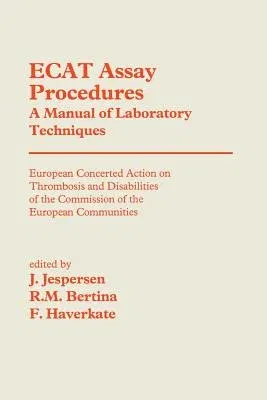Ecat Assay Procedures a Manual of Laboratory Techniques: European Concerted Action on Thrombosis and Disabilities of the Commission of the European CoPaperback - Softcover Reprint of the Original 1st 1992, 18 October 2012

Qty
1
Turbo
Ships in 2 - 3 days
In Stock
Free Delivery
Cash on Delivery
15 Days
Free Returns
Secure Checkout
Print Length
230 pages
Language
English
Publisher
Springer
Date Published
18 Oct 2012
ISBN-10
9401053308
ISBN-13
9789401053303
Description
Product Details
Book Edition:
Softcover Reprint of the Original 1st 1992
Book Format:
Paperback
Country of Origin:
NL
Date Published:
18 October 2012
Dimensions:
23.39 x
15.6 x
1.3 cm
ISBN-10:
9401053308
ISBN-13:
9789401053303
Language:
English
Location:
Dordrecht
Pages:
230
Publisher:
Weight:
344.73 gm

